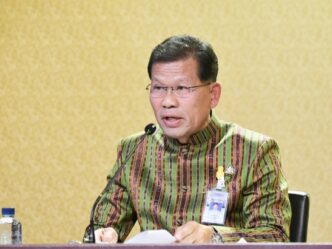Prevention Symptoms and Impacts of PM2.5 2024 Update. In recent years, the issue of PM2.5 dust has become a significant concern globally. PM2.5 refers to particulate matter with a diameter of 2.5 micrometers or smaller, which can pose serious health risks when inhaled.
Prevention Symptoms and Impacts of PM2.5 2024 Update
Prevention: To safeguard against the harmful effects of PM2.5, individuals are advised to take proactive measures. Some key prevention strategies include
- Stay Informed: Stay updated on air quality reports, especially during periods of high pollution.
- Use Masks: Wear masks, particularly in areas with elevated levels of PM2.5, to reduce inhalation of fine particles.
- Indoor Air Quality: Improve indoor air quality by using air purifiers and keeping windows and doors closed during peak pollution times.
- Limit Outdoor Activities: Reduce outdoor activities during periods of high PM2.5 concentration.
Symptoms: Exposure to PM2.5 can result in various health symptoms, including
- Respiratory Issues: Irritation of the respiratory system, coughing, and shortness of breath.
- Eye and Throat Irritation: Watery eyes and throat irritation.
- Aggravation of Pre-existing Conditions: Aggravation of pre-existing respiratory and cardiovascular conditions.
Impacts: The impacts of PM2.5 pollution extend beyond health, affecting various aspects of life
- Healthcare Burden: Increased healthcare costs and burden due to a rise in respiratory illnesses.
- Environmental Impact: Adverse effects on ecosystems, air quality, and visibility.
- Economic Consequences: Negative economic consequences, including productivity losses and increased healthcare expenses.
Update 2024: As of the latest update in 2024, efforts to combat PM2.5 pollution have intensified globally. Governments, communities, and individuals continue to work towards implementing effective measures to reduce emissions and mitigate the impact of fine particulate matter on public health and the environment. Public awareness campaigns, stricter regulations, and technological advancements in pollution control are some of the ongoing initiatives aimed at addressing the PM2.5 issue. Staying informed and actively participating in pollution prevention measures remain crucial in safeguarding individual and community well-being.
PM2.5 In Thailand
As of my last knowledge update in January 2022, Thailand has been facing challenges related to PM2.5 pollution. PM2.5 refers to particulate matter with a diameter of 2.5 micrometers or smaller, which can pose health risks when inhaled.
Situation in Thailand
1.Seasonal Variation: PM2.5 levels in Thailand often exhibit seasonal variation, with higher concentrations typically observed during the dry season, which runs from December to April. During this period, factors such as agricultural burning, industrial emissions, and weather conditions contribute to elevated levels of particulate matter.
2.Impact on Health: High levels of PM2.5 can have adverse effects on respiratory health, leading to an increase in respiratory diseases and other related health issues. Vulnerable populations, such as children, the elderly, and individuals with pre-existing health conditions, are particularly at risk.
3.Government Response: The Thai government has implemented various measures to address PM2.5 pollution. These include regulations on open burning, vehicle emissions, and industrial practices. Additionally, authorities often issue health advisories and take emergency measures such as school closures during periods of exceptionally high pollution.
4.Public Awareness: Public awareness campaigns are conducted to educate the population about the health risks associated with PM2.5 exposure and to encourage preventive measures. These may include wearing masks, staying indoors during peak pollution times, and using air purifiers.
5.International Collaboration: Thailand collaborates with international organizations and neighboring countries to address transboundary air pollution issues. Cross-border efforts aim to collectively combat the sources of PM2.5 and improve air quality in the region.
Please note that the situation can evolve, and new measures or changes in the status of PM2.5 in Thailand may have occurred since my last update. It is advisable to check the latest information from reliable sources or official announcements for the most current details on PM2.5 levels and efforts to address air quality in Thailand.
Data From primo.co.th









